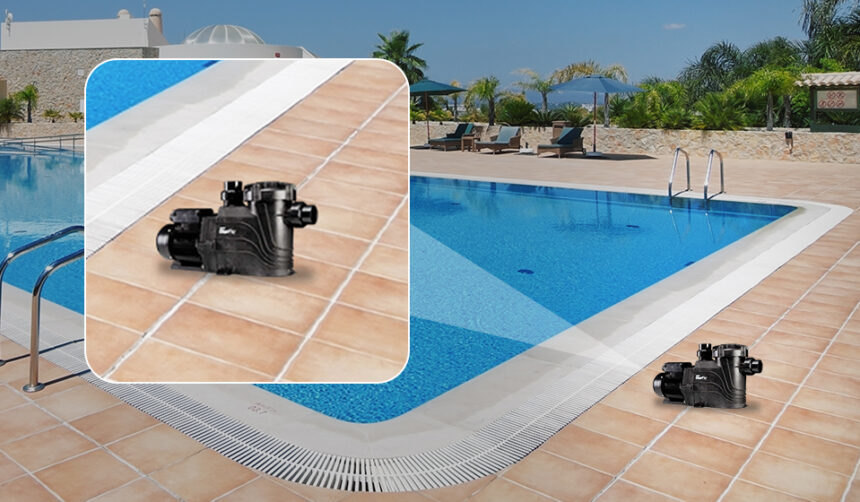A sparkling blue pool on a sunny day brings summer days filled with relaxation. For homeowners, a pool provides more than luxury during hot, humid weather – it meets their real needs. And what is the reason for getting a crystal-clear pool – the humble pool pump. Though often overlooked, the pool pump is crucial for proper pool functioning and maintaining a clean, safe aquatic environment. In this in-depth look, we’ll unpack everything there is to know about pool pumps and why they are essential for every pool owner.
The Purpose and Function of Pool Pumps
Circulation and Filtration
The pool pump is the heartbeat of a swimming pool, an unsung hero who works tirelessly to keep the water clean, clear, and healthy. It powers the filtration system, pulling water from the pool to remove contaminants and make your pool sparkling and inviting for a refreshing swim experience. It also evenly circulates chemicals like chlorine, ensuring proper sanitisation across every inch of the pool.
Chemical Distribution
Situated at the entry point of your pool’s filtration system, the pool pump holds a pivotal position in facilitating the distribution of chemicals. This involves chlorine for disinfection, algaecides to prevent algae growth, and pH balancers to maintain optimal water chemistry. Proper operation of the pool pump is crucial for maintaining a clean, healthy, and enjoyable pool environment.
Energy Efficiency
Energy-efficient pool pumps are the new frontier in sustainable pool maintenance, crafted with advanced technology to prioritise environmental responsibility. Not only do they significantly leave a smaller carbon footprint but they also reduce operational costs by consuming less electricity. This dual benefit makes investing in an energy-efficient pool pump a smart and eco-friendly choice. Pool owners can enjoy the convenience of a well-maintained swimming haven while embracing sustainable practices that have a positive impact on the environment.
Types of Pool Pumps
Single-speed, Dual-speed, and Variable-speed
Traditionally, pool pumps were limited to a single operating speed, often consuming excessive energy due to their fixed, high-rate performance. However, the introduction of dual-speed and variable-speed pumps has transformed the pool industry, offering homeowners newfound control over their energy consumption and operational costs.
Dual-speed pumps provide a lower setting option, ideal for periods when maximum filtration is not required. This feature allows pool owners to optimise energy usage, reducing unnecessary strain on the pump during low-demand times.
Taking energy efficiency to the next level, variable-speed pumps offer multiple speed options, granting users precise control over their pump’s energy output. By adjusting the speed to match the specific needs of the pool, homeowners can achieve optimal performance and energy efficiency, ultimately enhancing their swimming experience.
Key Components of Pool Pumps
While pump models vary, most pool pumps contain the same basic components:
Pump motor: This supplies the power to spin the impeller and circulate water. Motors run on electricity and are available at single, dual, or variable speeds.
Impeller: This is the rotating piece inside the pump that draws in and forces water through. Impellers are attached to the motor shaft.
Strainer basket: This captures large debris before it reaches the impeller to prevent clogs and damage. Baskets require regular cleaning.
Pump housing: The pool pump’s housing is the outer casing that accommodates all internal components.
Electrical controls: These allow the pump to be turned on/off and often include programmable timers to automate pool pump operation.
Selecting the Ideal Pool Pump: A Comprehensive Approach
Ensuring an optimal pool experience depends on choosing the right pump, which is influenced by several critical factors. Pool size, the intricate piping system, the desired pump flow rate measured in gallons per minute (GPM), the pool filter’s dimensions and type, and any desired accessories all play a pivotal role in determining the ideal pump.
Crucially, the selected pump must harmonise with the hydraulic design, ensuring that the entire pool’s water is circulated within a recommended timeframe of 6 to 12 hours. Deviating from this balance, either through an overpowered or underpowered pump, can compromise the system’s efficiency, leading to suboptimal performance and potential energy waste.
Operating and Maintaining a Pool Pump
Regular Cleaning: For optimum performance, pool pumps should run every day for multiple hours in warm months when swimming occurs regularly. Daily operation circulates chemicals like evenly distributed chlorine and continuously cleans the pool to trap dirt and debris. During cooler months or when closing a pool for the winter, cycles can be shorter to save energy but still provide needed circulation.
Inspection and Repairs: While pool pumps are designed to operate reliably, routinely inspecting the pump is essential to identify and address potential issues. Leakage or unusual noises emanating from the pump can be telltale signs of an underlying malfunction, prompting the need for immediate attention. By fixing minor issues earlier, you can prevent them from becoming more intense and costly problems down the line.
Proactive Maintenance: Checking filter pressure gauges and backwashing filters when they become clogged prevents overworking the pump. Periodically cleaning out skimmer baskets prevents debris buildup and potential blockages. Lubricating o-rings and tightening fittings prevent leaks that compromise pump flow. Periodic professional servicing checks impellers, motor seals, valves, and other components. Replacing worn-out parts promptly is advisable to maintain optimal pump performance and extend the pump’s lifespan.
Final Thoughts
The pool pump is a crucial component that shouldn’t be underestimated. It’s the driving force behind circulating water, operating pool filters, and ensuring a refreshing and hygienic swimming environment. Choosing the right pump, maintaining it properly, and understanding its energy consumption are crucial responsibilities of pool ownership.
As a pool owner, learning about the intricate details of pool pumps is more than just gaining operational knowledge. It’s a journey towards truly appreciating the seamless functioning of a feature that brings so much pleasure and relaxation into your life. The next time you take a refreshing dip in your pool, remember that the pool pump lies at the heart of this idyllic experience.













